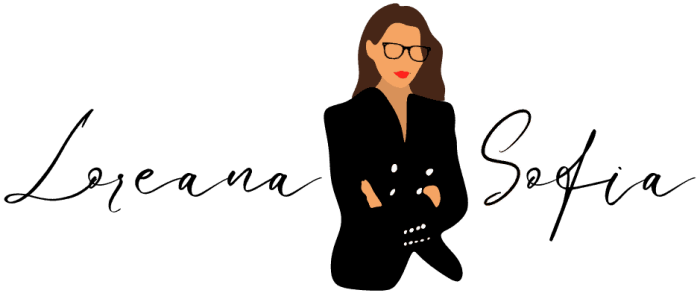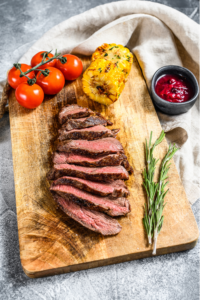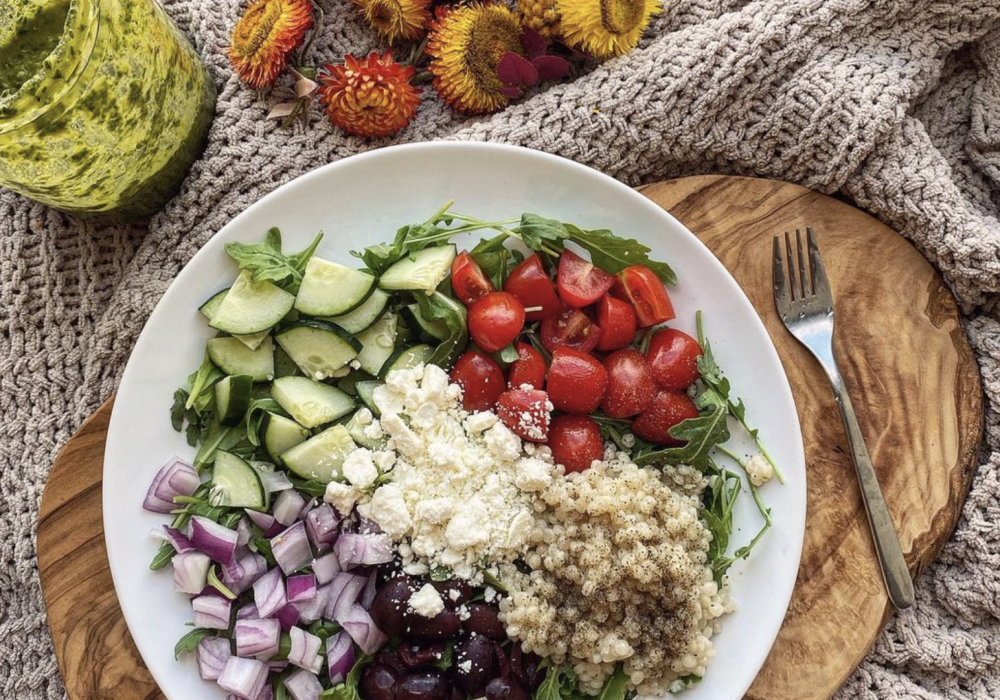One of the oldest questions in gym history: how to lose fat, not muscle. Here’s how to do that.
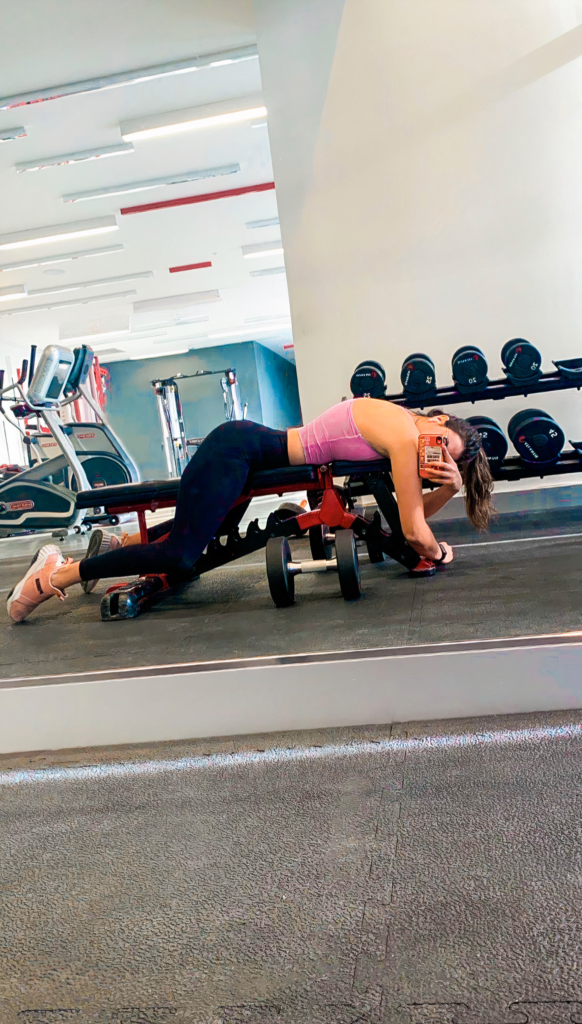
Preserving muscle while cutting is theoretically not hard. But when it comes to actually executing it… not so easy.
So instead of slamming you with a bunch of to-do’s, I’ve divided this blog in two sections.
The first section is the fundamentals on how to lose weight and preserve muscle. You must must be doing these. These are part of the 80/20: being consistent with these will provide for 80% of your progress.
The second section are a few more techniques you can leverage if you’ve gotten the fundamentals locked in. They aren’t as solidly proven as the fundamentals are (I’ll link the articles), but they are worth trying! Who knows, they might work for you.
A little side note: you will inevitably lose some muscle mass during a cutting phase. It’s part of the process. So don’t get too frustrated with that.
This blog post is all about the top suggestions on how to lose weight, not muscle!
how to lose fat - not musclefundamentals
1. Moderate Calorie Deficit
Losing weight 101. You won’t be getting very far without understanding calories in vs. calories out.
Basically, you need to be burning more calories than you are eating. There is NO getting around this.
Now, there’s the question of how much of a deficit you need to be in. There are many peer-reviewed articles that show that being in a 500-calorie deficit per day is optimal for muscle preservation.
If 500 calories seems to be too much of a stretch, you can always go for a smaller deficit! Don’t think that it’s 500 or nothing: start by 200 if that’s what can handle for now!
2. Resistance Training
The reason you want to be lifting weights during your cut is basically because you want to give your body a reason to keep burning calories.
Let me explain.
If you were to only be in a calorie deficit, then you would basically be slowing your whole body down (less calories = less energy). Therefore, your body would naturally burn less calories, and therefore eradicate the calorie deficit.
It’s more complicated than that, but that’s the main point.
By going to the gym, you’re telling your body that it’s NOT the time to slow down, it’s actually the time to build muscle fibres. These fibres will then burn more calories in and of themselves in order to be maintained.
So basically, you’re eating in a calorie deficit (as per step 1), as well as keep that metabolism active (as per this step) allowing for the calories in vs calories out equation to hold.
I explain this in more detail in my article about nutrition facts that will help intuitive eating, so make sure to take a look at it! Or, here’s a good peer-reviewed article about muscle preservation during weight loss that looks into this.
3. Prioritize Protein Intake
Keeping in mind the two previous steps, you want to be prioritizing your protein intake.
Protein is the main food your muscles need. By keeping proteins high, you’ll be reinforcing what was previously stated.
Again is the question of just how much protein you should be eating. There are many articles that go over this. The general consensus of the role of protein in weight loss and muscle maintenance requires you to do the following:
- Eat 1.2 – 1.6g of protein per kilogram of bodyweight per day
- Eat 25-30g of protein per meal
Nutrition Coaching
Train hard. Eat well. Build your body one day at a time.
Train hard. Eat well.
Build your body one day at a time.
1-to-1 coaching. A sustainable nutrition plan. A lifetime of knowledge.
4. Get Adequate Sleep Each Night
I know you know this one.
So let me jump straight into the saying that sleep deprivation can alter hormone levels and metabolism, leading to an increased risk of weight gain and muscle loss.
Get at least 7 hours of sleep each night. That’s all.
how to lose fat- not muscleextras
5. Increase Dietary Fibre
There have been several studies investigating the potential benefits of dietary fibre and their role in their weight loss / muscle preservation. The results have generally been positive.
There are several mechanisms through which increased dietary fibre can help:
- Increased satiety: Fibre-rich foods can be more filling, which aids in being in a calorie deficit without feeling too hungry.
- Reduced inflammation: chronic inflammation has been related to decreased muscle growth. Thankfully, dietary fibre reduces inflammation!
- Improved glycemic control: fibre slow the digestion and absorption of carbs, which lead to more stable blood sugar levels. This in turn helps muscle preservation due to improved insulin function.
- Wider diversity in gut microbiota: Increased dietary fibre leads to better gut bacteria. This can help produce short-chain fatty acids, which in turn improve muscle fibre development.
6. Carb Cycling
If you’re a gym aficionado, you’ve probably heard of carb cycling.
Basically, carb cycling is about ✨cycling✨ between days of high carb intake and low (close to none) carb intake. This would allow one to be in control of insulin levels, which can in turn control energy metabolism.
On days where carbs are low, glucose is also low. Therefore you’d be tapping into fat storages for energy.
However, you don’t want to keep carbs low at all times because the body might tap into protein for energy, which goes against muscle building. This is why you want to go into high carb (and insulin) days: it will allow for muscle growth and repair.
Definitely worth trying if you can handle a more strict control of your diet!
7. HIIT or MICT?
Another timeless question: is high intensity interval training (HIIT) or moderate intensity continuous training (MICT) better? Studies aren’t all on the same page on their relevant on how to lose weight, not muscle.
For example, some studies have found that between HIIT and MICT, HIIT results in significantly more fat loss while preserving more muscle than those who participated in MICT.
However, another study found that both types of exercise result in significant weight loss, though HIIT still prevails as the one that preserves most lean mass.
Finally, a third set of studies have found no significant difference in weight loss and muscle preservation between HIIT and MICT.
Basically, try it out for yourself and see what works best for you.
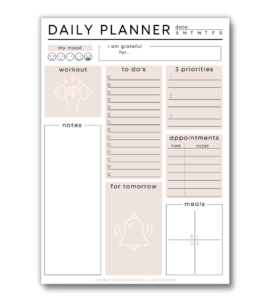
Want a free
DAILY PLANNER?
Start your day off by filling out this Daily Planner, and I can almost promise you that you’ll be significantly more productive. Fill out the form below and have the Daily Planner delivered straight to your inbox!
8. Adequate Vitamin D Intake
Interesting one. There have been several studies about Vitamin D and its role in weight loss and muscle preservation though the results have been mixed.
Some studies found that indeed Vitamin D is helpful for weight loss and muscle preservation- though the studies I have found had small sample sized and short trial duration.
On the other hand, studies have also shown that Vitamin D has no conclusive or significant effect.
9. Intermittent Fasting
Intermittent fasting is basically about reducing the window in which you can eat by a certain amount of hours.
It works through different mechanisms:
- Helps being in a calorie deficit: when you limit the amount of time you can eat, you may tend to eat less overall as it can aid in appetite and snacking control
- Increase levels of human growth hormone (HGH): HGH plays a role in muscle growth and repair, and its levels tend to rise when fasting. This can help offset muscle loss in when in a calorie deficit
- Improved insulin sensitivity: by being able to use insulin more efficiently, energy can be better converted, thereby making weight loss and muscle preservation easier.
10. BCAA Supplements
BCAAs are another point of debate on how to lose weight, not muscle.
Some studies have found no significant effect of BCAAs on body composition and weight loss. The study that is linked has been performed on resistance-trained individuals that were in a calorie deficit.
However, another study has found that BCAA supplements combined with resistance training improved body composition in older adults. It should be noted that this particular study was small.
11. 8 Science-Based Ways to Help You Lose Weight Without Tracking
Make sure to read my other article on more science-based ways to help you lose weight without tracking your calories!
Here are a few topics that it covers:
- 5 Pillars of Metabolism
- Shifting mindset
- Fidgeting
- Cold plunges
- Fasting
- Caffeine
- L-Carnitine
Hope this blog helped you in understand how to lose weight, not muscle!
This blog post was all about how to lose weight, not muscle.
xx LS
Share this post
